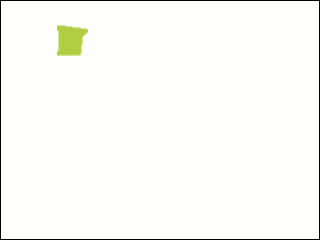transliteration ha katakana origin 八 | hiragana origin 波 | |
 | ||
は, in hiragana, or ハ in katakana, is one of the Japanese kana, each of which represent one mora. Both represent [ha]). They are also used as a grammatical particle (in such cases, they denote [wa], including in the greeting "kon'nichiwa") and serve as the topic marker of the sentence. は originates from 波 and ハ from 八.
Contents
In the Sakhalin dialect of the Ainu language, the katakana ハ can be written as small ㇵ to represent a final h sound after an a sound (アㇵ ah). This, along with other extended katakana, was developed by Japanese linguists to represent sounds in Ainu not present in standard Japanese katakana.
Stroke order
The Hiragana は is made with three strokes:
- A vertical line on the left side with a small curve.
- A horizontal stroke near the center.
- A vertical stroke on the right at the center of the second stroke followed by a loop near the end.
The Katakana ハ is made with two strokes:
- A straight stroke from the top pointing towards the bottom left.
- Another straight stroke going the opposite way, i.e. from the top to the bottom right.
Other representations
References
Ha (kana) Wikipedia(Text) CC BY-SA
